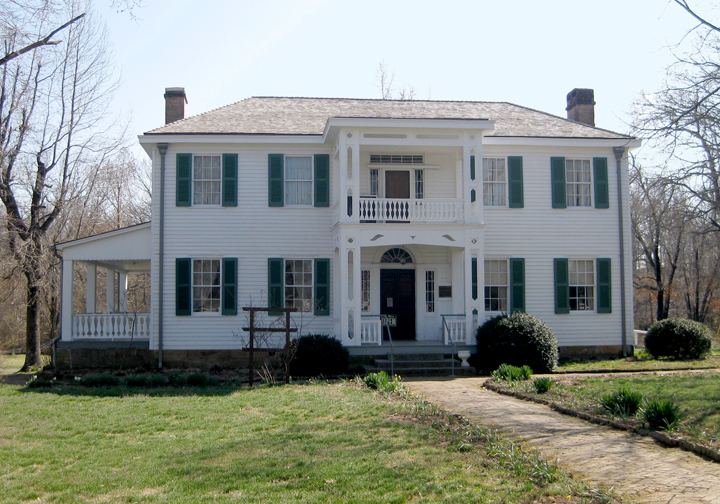Location Park Hill, Oklahoma Architect Unknown NRHP Reference # 70000530 Phone +1 918-456-2751 | Built 1844-5 Architectural style Federal Added to NRHP June 22, 1970 | |
 | ||
Address 19479 E Murrel Rd, Park Hill, OK 74451, USA Hours Closed now Tuesday10AM–5PMWednesday10AM–5PMThursday10AM–5PMFriday10AM–5PMSaturday10AM–5PMSundayClosedMondayClosedSuggest an edit Similar Cherokee National Capitol, Cherokee National Jail, Cherokee Female Seminary, Sequoyah's Cabin, Cherokee National Supreme | ||
Seeds of history history of the murrell home
The Murrell Home, also known as the George M. Murrell Home, is a historic home and museum in Park Hill, near Tahlequah, Oklahoma in the Cherokee Nation. It was built in 1845 and was most likely constructed by African-American slaves brought west by the owners. It is an emblem of the elite among the Cherokee in the mid-nineteenth century.
Contents
- Seeds of history history of the murrell home
- Oeta story on preserving history murrell home aired on april 27 2011
- References
The mansion was built by George Michael Murrell, a wealthy white planter and merchant married to Minerva Ross, the niece of prominent Cherokee leader John Ross. He called it Hunter's Home. The Murrells came to Indian Territory about the time of the Trail of Tears (1839). They furnished their house with the latest in fashions. They held 42 slaves, whom they housed in nine cabins on the large property.
During the American Civil War, the area surrounding the Murrell Home was frequently raided by forces loyal to both the Union and Confederacy. The Murrell Home was spared destruction during this turbulent time and was the only local building to survive the conflict.
Cherokee Jennie Ross Cobb (1881–1959), one of the earliest Native American photographers, later lived in the Murrell Home and helped direct restoration of the house. The house was declared a National Historic Landmark in 1974.
The building is operated by the Oklahoma Historical Society as a historic house museum and has been furnished reflecting the period 1830s-1860s. The Daniel Cabin is a log cabin on the property; it is used for living history demonstrations of Cherokee life in the 1850s. The property also features a 45-acre (180,000 m2) park with trails.
